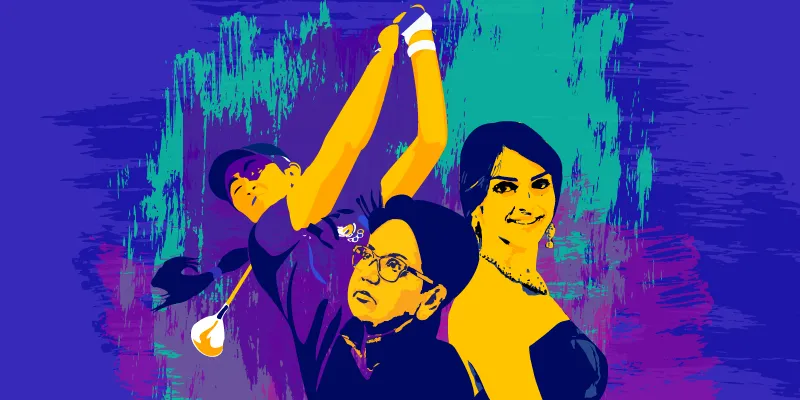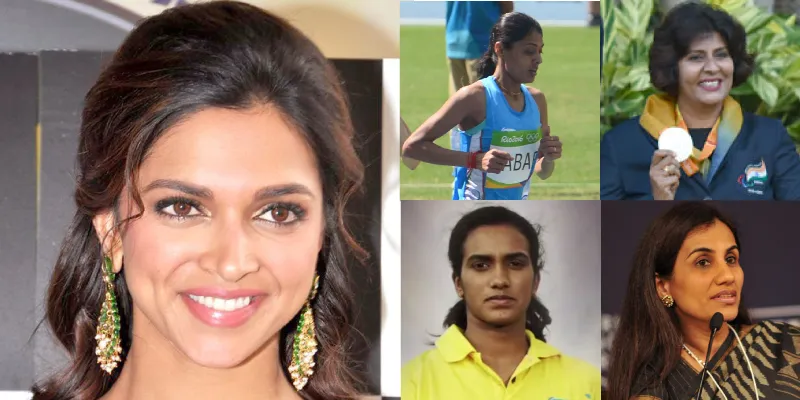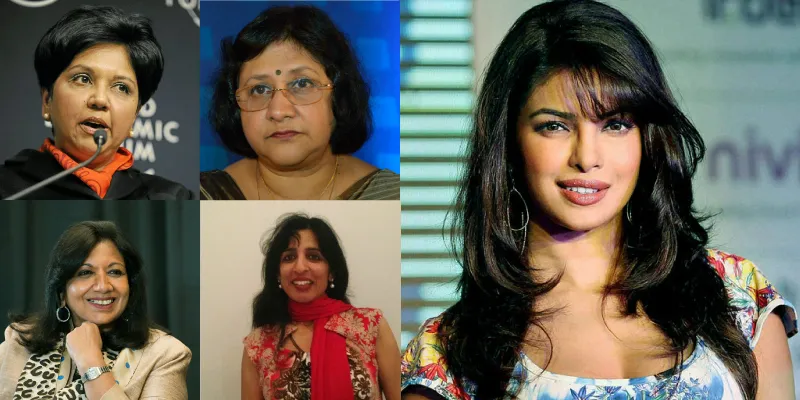From conquering the skies to breaking age-old traditions, women did it all: 2016, the year that was
Capturing the ups and downs, the achievements and the challenges of 2016 for women.
The year 2016 was an eye opener in more ways than one for women, both in India and across the globe. We rode the high wave at the Rio Olympics, and Indian sportswomen set new milestones this year. Feminism became a cool word; be it Obama or Canadian PM Justin Trudeau, all espoused and embraced it.
Unfortunately, on the heels of the high tide came the low tide, showing us that university campuses need to be safer for women, rape accused need more stringent punishments, and that the issues that impact women have not been addressed as they need to be. Over the decades, we have been talking about the same issues. We have a long road ahead of us, and we have touched just the tip of the iceberg.
As the curtain falls on 2016, we look forward to new resolutions, plans, and dreams. Here is a quick look at how we fared in 2016. What were the big hits and misses, the success and the failures, and which women took the limelight, and why?

ear tat was:
The many firsts
This was the year of many firsts. Women pilots took flight as the Indian Air Force opened its doors to women pilots and accepted them in fighter squadrons.
Golfer Aditi Ashok became the first Indian woman to win a Ladies European Tour, and Deepa Malik, the first-ever woman paralympian to win a medal, clinching a silver in the shot put. Women unleashed their power on the courts and the tracks, especially at this year’s Rio Olympics. From wrestlers to archers, it was a proud moment to see the feats of those women who represented India at Rio this year.
Lalita Babar becoming the first Indian athlete since 1984 to reach the Olympics finale, and the Indian women’s hockey team kick starting their Olympic journey after 36 years were moments to cherish.
Sportswomen shone this year. The trio of Sakshi Malik, PV Sindhu and Dipa Karmakar made our hearts swell with pride. PV Sindhu became the first Indian shuttler to enter the finals, and sealed a silver for India. Sakshi Malik clinched a bronze, becoming the first woman wrestler to do so. Dipa Karmakar became the first Indian to qualify for the vault finals.
Major brands queued up to onboard these women, and many other female athletes, for various campaigns addressed at women. While Indian sportswomen garnered attention and the nation basked in the glory of their achievements, nothing much was done to improve the overall infrastructure and the support provided to women. At the Rio Olympics, one woman athlete collapsed because she did not have anyone to give her water, despite a large contingent that travelled to Rio from India.
The misogyny and the sexism towards sportswomen still continues. One glaring instance of this is the lewd messages in the ladies toilet of Kanteerva stadium, where women practice to the length of tennis player Sania Mirza’s skirt and the nipples of Serena Williams that showed through the mandatory white dress she was wearing for a Wimbledon match that had the world in such a tizzy. Why is it that when it comes to sports, women face flak for their clothing? Why are they looked at as women first and players second. Perhaps it is time to look at their game and merit rather than bringing gender into play in sports.
My choice and why it matters
Heena Sidhu, a two-time Olympian, withdrew from the Asian Airgun Shooting Championship in Iran scheduled for December. She refused to participate because of the need to wear a hijab, and said that “making hijab mandatory for all sportswomen was not in the spirit of sport”. Recently, Ursula von der Leyen, Germany’s Defense Minister, refused to wear the hijab during her trip to Saudi.
From the outrage faced by the woman who took a selfie without wearing a hijab while out on the streets for breakfast to the French government bidding adieu to burkini by banning them, it seems that everyone has a say in what a woman can wear but herself. What women wear should be their choice. But even in the 21st century, with the so-called progress the world has made, hemlines apparently remain an issue for public debate. It’s time to put a stop to this kind of interference.
Embracing the fight
Opting for her own choice of clothing, the pantsuit, Hillary Clinton gave a good fight. She became the first woman to be nominated by a major party in the US to run for the office of President. Though she didn’t win the electoral votes, she won the popular vote by a huge margin.
From aiming for the Oval Office to fighting for a clean toilet, the fight is on. This woman rewrote the rules of the game when she refused to enter into a marriage because the groom’s house had no toilets and he didn’t deliver on his promise of providing one. Like her, there were many women this year, faceless and nameless, who spoke up for themselves, who did not give way to bullying and held their own.
While Trump’s sexist tirade continued unabated throughout his presidential campaign, Michelle Obama took up the challenge and told him and the world that enough is enough.
From the real to the reel, the year was about putting it out there and initiating discussions around how to resolve issues, with Pink, Dangal and Neerja making strong statements. The Madhya Pradesh government showed support by making Neerja and Gangajal tax-free in the state.
Meanwhile, the film fraternity from the US, or rather the Academy of Motion Picture Arts and Sciences, invited Bollywood’s legendary actress Sharmila Tagore, Slumdog Millionaire star Freida Pinto, and director Deepa Mehta to become its members.
Inspiration has many forms
Inspiration comes in all shapes and sizes, and this year was no different. From the girl who was the youngest attendee at this year’s Apple developer conference to the unschooled 17-year-old Malvika Joshi, who made it to MIT when IIT’s back home didn’t welcome her, the year was full of women punching above their weight.
Tina Dabi from Delhi topped the civil services exam in her first attempt, and Radhika Menon became the first woman to receive the IMO award for exceptional bravery at sea. While 20 women bikers were on a mission to scale the Himalayas this year, Bharulata Kamble drove from London to Maharashtra to spread awareness about female education. Sheela Sharma has not let her disability get the better of her - the artist paints with her toes and mouth.

Breaking stereotypes
This year, the transgender community made its presence felt across the country. In Kerala, the transgenders cast their votes for the first time, and one became the first Indian transgender to preside over a polling booth as presiding officer during elections.
Deepika Padukone and Priyanka Chopra made waves on the global entertainment industry stage. Deepika was paid more than her male co-stars in India, and Priyanka downed tequila on Ellen Degeneres’ talk show, while also kicking ass in her own show, Quantico, with style and panache. Both the women have emerged as great role models in today’s world.
There were numerous women who embraced themselves and stood by their choices, breaking stereotypes, a few stories of which can be read here.
The A-list
In the world of business and entrepreneurship, of the companies tracked by YourStory, 29 women-led companies raised funding this year.
Biocon Chairperson and Managing Director Kiran Mazumdar Shaw was appointed as ‘Chevalier de l’Ordre National de la LAgion d’Honneur’ (Knight of the National Order of the French Legion of Honour) for her outstanding contribution and dedication to the Biosciences and Research field globally.
PepsiCo CEO and Chairman Indra Nooyi was ranked second in Fortune’s list of the 51 most powerful women in the world, and recently joined Donald Trump’s Strategic and Policy Forum, which brings together CEOs and business leaders who know what it takes to create jobs and drive economic growth in US.
Speaking of lists, on Forbes’s twelfth annual list of the 100 most influential women, featuring extraordinary entrepreneurs, visionary CEOs, politicians, celebrity role models, billionaire activists and pioneer philanthropists, were the names of SBI Chief Arundhati Bhattacharya, ICICI bank head Chanda Kochhar, Biocon founder Kiran Mazumdar Shaw and HT Media Chair Shobhana Bhartia.
India-born Neerja Sethi, who co-founded IT consulting and outsourcing firm Syntel with her husband Bharat Desai, and President and CEO of Arista Networks Jayshree Ullal were listed this year on Forbes‘ annual list of America’s 60 wealthiest and most successful self-made women entrepreneurs, ranked sixteenth and thirtieth respectively.
The government too needs to support small businesses run by women and provide more funding and capital. In a significant step to boost women entrepreneurship in the state, Chief Minister Mehbooba Mufti ordered the conversion of Jammu Haat into an exclusive ‘Women Business Centre’ in Jammu and Kashmir.
Mumbai-based technology startup accelerator Zone Startups launched a first-of-its-kind six-week programme to empower and support women entrepreneurs who are building technology ventures.

Numbers don’t lie
The Indian economy is losing money because of the lack of a powerful woman workforce, be it in boardrooms or corporate houses. India’s national income would increase by 27 percent if the participation of women in the workforce matches the level of men, IMF Managing Director Christine Lagarde recently shared.
What is the kind of gap we are taking about?
The Credit Suisse Research Institute released its bi-annual CS Gender 3000 report for 2016 reaffirming its prior findings that companies with higher participation of women in decision-making roles continue to generate higher market returns and superior profits. According to the report, the number of women on boards in India has increased. It has doubled over the past six years from 5.5 percent in 2010 to 11.2 percent in 2015. This has helped India close the global gap average, which stands at 14.7 percent.
The World Economic Forum has been quantifying the magnitude of gender-based disparities and tracking their progress since 2006. According to the report this year, India ranks 87 out of the 144 countries on the Global Gender Index Gap. The report compares the data for 2016 with 2006 across four parameters: health, education, political empowerment and economic participation and parity.
There is no doubt that there is a need for more women in the economy, but what are the women doing at present? Where is all their time and energy going?
According to the Progress of the World’s Women 2015–2016, Transforming Economies, Realising Rights report, across South Asia, women report doing more unpaid care and domestic work than men: 10 times as much in Pakistan; almost seven times more in India; and nearly three times more in Bangladesh. This unpaid care or work predominantly performed by women is not incorporated into the calculation of GDP, or reflected in other macroeconomic indicators, or taken into account in economic policy-making. In India, for example, the total value of time spent on unpaid care and domestic work was estimated to be equivalent to 39 percent of GDP.
The other factors pulling women down include issues such as female infanticide, child marriage and household chores.
Almost 47 percent of girls in India are married before their 18th birthday.
Data released by the United Nations Department of Economic and Social Affairs (UN-DESA) for 150 countries over 40 years shows that India and China are the only two countries in the world where female infant mortality has been higher than male infant mortality in the 2000s. The data shows that an Indian girl child aged 1-5 years is 75 percent more likely to die than an Indian boy, making this the worst gender differential in child mortality for any country in the world.
Every day, women and girls across the world collectively spend about 200 million hours collecting water, according to a United Nations Children’s Fund (UNICEF) report. This is a daily activity for million of girls in India too.
Safety is yet another major concern. These challenges may not apply to all women, but they are a cause for concern. Different women face different challenges, and these vary on the basis of economic background, access to education and family background, among other things.
But the battle is on, and women are not ready to give up so easily. This year has been proof of that.
Entry into hallowed grounds
This was the year when women walked into places that had denied them entry for centuries. Four women broke into the Trimbakeshwar temple in Maharashtra.
Haji Ali mosque opened the doors of its inner sanctum to women, and so did the Shani Shingnapur temple. Following the initiatives of many temples, a 1,000-year-old mosque in Kerala opened its doors to women.
While places of religious worship allowed women entry, the Pinjra Tod campaign in universities gains ground. Students and women are fighting for their freedom and right to use the library and other facilities like the male students at night and not be shut inside the hostels in the name of safety.
Empowerment, support, and safety
We need more women in power, because they can usher in change and policies that will help and empower women. With Mehbooba Mufti, J&K CM, one can see examples of these changes. A women-only bus service was launched in Kashmir.
An all-women police station also started functioning in Anantnag in Kashmir. It caters to all the five police districts of South Kashmir range – Anantnag, Kulgam, Shopian, Pulwama and Awantipora.
The army too has decided to train the girls living on the border in Jammu and Kashmir in martial arts. The course, under Operation Sadbhavna, is being conducted at Government High School, Seri, and will focus on physical training and mechanics of self defense for girls, and will be conducted by a qualified army soldier.
Senior IPS officer Archana Ramasundram was earlier this year appointed as the Director General of Sashastra Seema Bal (SSB). She is the first woman to head a paramilitary force. The SSB is also planning to increase the number of women personnel at the border posts and engage them further in operational duties.
In April, the government had announced that it would reserve 33 percent of posts at the constable level in the CRPF and the CISF to enhance women’s representation in central paramilitary forces. In fact, the CRPF was set to deploy over 560 women commandos for undertaking anti-Naxal operations in select Left Wing Extremism-affected states.
The discussion around triple talaq too gained ground this year, and the matter went to court. The current powers that be wanted to put an end to the practice. The challenge will be to ensure that the rulings benefit women and don’t end up being a political game.
The big miss
One of the biggest misses this year was when the government announced that the concept of marital rape cannot be suitably applied in India due to factors like poverty, illiteracy, and religious beliefs.
The New Year
In the coming year, the challenge will be to see how the issues that were raised this year, such as triple talaq, women’s safety, lack of funding for women entrepreneurs, and the general misogyny and sexism women are subject to offline and online, are taken forward and dealt with.
Most importantly, at the individual level, how each one of us tackles the challenges before us will matter too, kyunki boond boond se ghadha bharta hai. If we improve our life, then we can do the same for others. The change needs to start with us.







